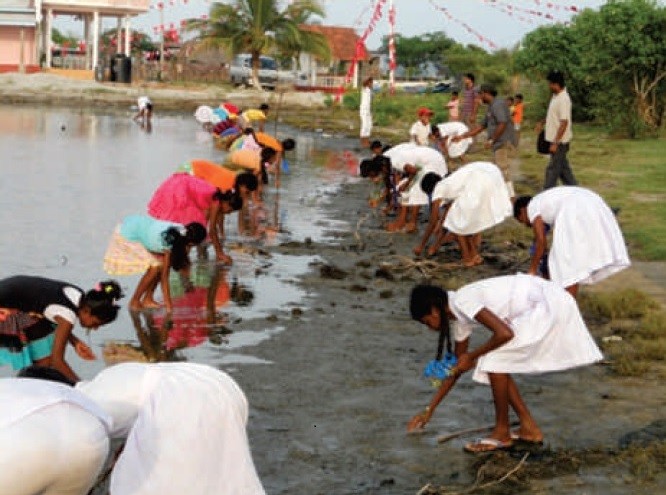
The Kokkilai Lagoon lies on the border between Sri Lanka’s Northern and Eastern provinces. Its shores are home to 448 families, split nearly equally between Sinhalese and Tamils. During the 30-year civil war, many of these families were displaced. When the war ended and they began returning in 2009, misunderstandings between the communities soon arose, often around fishing, the area’s main livelihood.
To address rising tensions and promote community reintegration, USAID’s Office of Transition Initiatives brought the communities together through the collective development of a lagoon management plan to ensure an equitable distribution of income from the shared natural resource.
In partnership with Rainforest Rescue International, USAID convened the two predominant fisheries cooperatives in the area—one Sinhala and one Tamil—for workshops in November and December 2013 on business management and organizational governance. USAID then facilitated a lagoon mapping exercise and development of a management plan. The exercises required unprecedented inter-communal interaction, through which members of both communities grew increasingly comfortable with one another. USAID also supported a Lagoon Rangers program for children to learn about the lagoon ecosystem.
Most dramatically of all, members of the two fishing societies recently decided to merge their groups into a single unified body, demonstrating the depth and durability of this communal transformation.
The impact of this effort continues to grow. USAID arranged for leaders of the fisheries cooperatives to visit counterparts in Sri Lanka’s south in February 2013, with important results, including the establishment of a fisheries cooperative bank. More than 90 families have already joined the bank, and 16 children have opened special savings accounts. Impressed by the initiative, a national motorboat engine supply company designated the cooperative its official distributor for the area, enabling it to earn commissions. USAID provided basic furniture and equipment for the bank, and helped them connect with relevant government authorities.







Comment
Make a general inquiry or suggest an improvement.